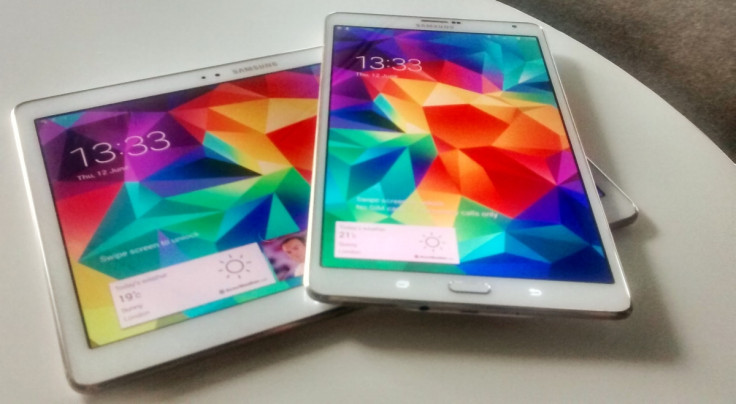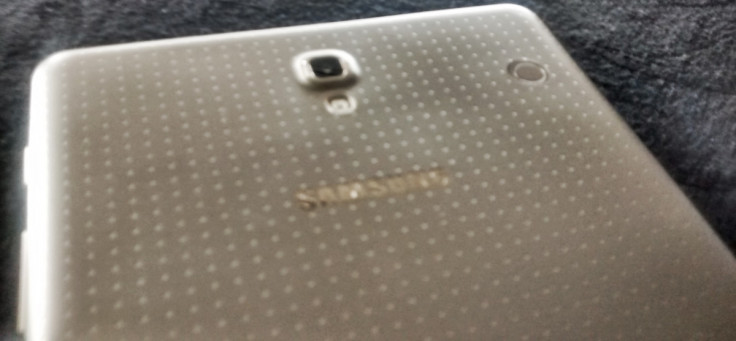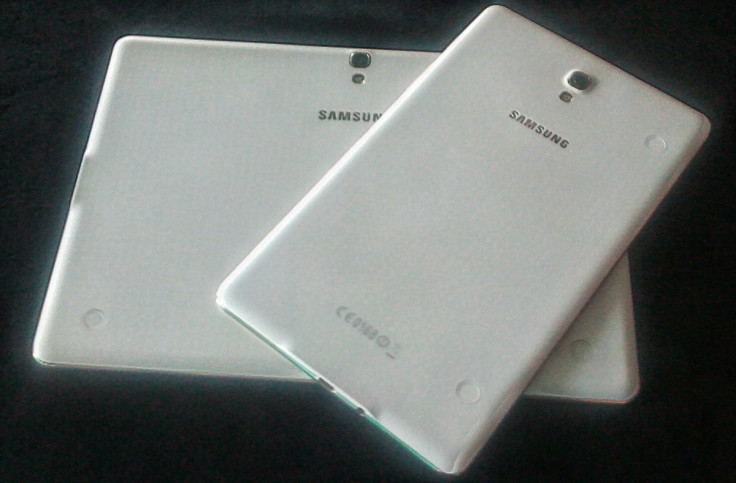Galaxy Tab S Preview: First Impressions of Samsung's iPad-Killer Tablets

Key Features
- Exynos Octa-core processor
- Screen resolution: 2560 x 1600
- 6.6mm thin
- 3GB RAM
- Release Date: 4 July
- Price: £349 (8.4in) and £449 (10.5in)
Galaxy Tab S First Impressions
Samsung already has about a million different tablets on sale but the company's newest offering is aimed at directly challenging Apple's iPad mini and iPad Air.
Just as the Samsung Galaxy S smartphones are the company's flagship mobile phone offering, the Galaxy Tab S tablets (which are available in 8.4in and 10.5in screen sizes) will be the company's premium offering in the tablet market.
Ahead of the official launch of the tablets in New York on Thursday, I had a chance to have a look at the new products and here are my thoughts:
Galaxy Tab S: Design
Both tablets are incredibly thin. At just 6.6mm the tablets are thinner than the Galaxy S5 as well as both the iPad Air and the iPad Mini 2.
It is a remarkable technical achievement by Samsung's engineering team and makes the smaller 8.4in Galaxy Tab S tablet in particular, remarkably portable.
At just 294g (for the Wi-Fi only model) it is also very lightweight. The 10.5in model is also lightweight at 465g which is 4g lighter than the iPad Air.
The design language borrows heavily from the Galaxy S5, with the dimpled rear cover the same as used on the company's flagship smartphone for 2014.

The tablet comes in two colours, "dazzling white" and "titanium bronze" - or white and bronze as everyone but Samsung would call them. The colours are a bit boring, and it would have been nice to see Samsung take a leaf from Nokia's book and produce a mobile device with real colour.
The tablets don't feel quite as premium as the iPads, but compared to Samsung's other plasticky tablets in the Tab range, they are clearly a step up in class.
Because the screens are in a 16:9 aspect ratio, the smaller tablet is thinner but longer than the iPads Air, making it look a bit like an oversized smartphone.
That said, the 16:9 aspect ratio does mean the screens are much better for watching videos.
Galaxy Tab S: Screen
Speaking of the screen, this is the big selling point of the Galaxy Tab S.
Let's get the specs out of the way first. The 8.4in (measured diagonally) Super Amoled screen has a resolution of 2560 x 1600 pixels, giving it a pixel density of about 360 pixels per inch (ppi).
The 10.5in screen has the exact same resolution, meaning the pixel density drops to 287ppi.

These figures compare well to Apple's tablets with the 9.7in iPad Air having a pixel density of 264ppi while the iPad mini 2 has a pixel density of 324ppi.
But the screens, which Samsung called the "world's greatest" on a tablet, are not just all about the pixels.
Samsung says these "next generation" screens can reproduce 97% of the Adobe RGB colour coverage, whereas the Retina displays on the iPad's can only manage around 70%.
The result is an incredibly sharp screen with flawless viewing angles, great contrast and vibrant, bright colours.
Next to the screens on the Galaxy Tab S devices, the iPad's screen looks washed out and dull. For some (me included) the colour on Samsung's Amoled screens of recent years has been too saturated, and the issue remains here, but Samsung's new adaptive display feature means you can tone it down.
The Adaptive Display feature will adjust the gamma, saturation and sharpness depending on whether you are watching a film, reading a book or depending on the lighting conditions. We'll have to wait for a full review before we can decide how well it works in practice.
Galaxy Tab S: Hardware
The Galaxy Tab S will come with Samsung's own powerful Octa-core Exynos 5 chip along with a huge 3GB of RAM. The tablets come with either 16GB or 32GB of storage along with a memory card slot to add up to an extra 128GB of storage if needed.
In the brief time I had with tablets the performance seemed to be fast and responsive with apps loading quickly, video playback smooth and games playing without any lag.
A 4G version of the Galaxy Tab S tablets will be available also, and all versions get Bluetooth 4.0, an IR blaster, and support for the faster Wi-Fi ac standard.
The tablet also brings over the fingerprint scanner from the Galaxy S5 but hopefully it will work a little better on the Galaxy Tab S than it did on the smartphone.
Samsung told me they are promising at least 10 hours of video playback from the 4900mAh and 7900mAh batteries on the 8.4in and 10.5in tablets.
Galaxy Tab S: Software
The Galaxy Tab S will come with Android 4.4 (KitKat) installed, but this has been skinned with Samsung's own TouchWiz interface which means a lot of customisation to almost all areas of the interface.
Samsung has added a children's mode, multi-user mode as well as a new home screen hub which offers a Flipboard-style mix of news and video content.
While I am not a fan of the TouchWiz experience, it has got a lot better in the last 12 months, and the layout seems to work well on a tablet.
Samsung has also recently launched Kick, a football-focused app giving real-time stats and player details, related to teams in Europe's top leagues and of course from the World Cup. The app is only available on Samsung's tablets for the moment, and coming to the company's smartphones in August.
Galaxy Tab S: Price and Release Date
The Galaxy Tab S tablets will cost more than the comparable iPads when they launch in the UK on 4 July.
The 8.4in Galaxy Tab S will cost £349 while the 10.5in Galaxy Tab S will cost £449 - Samsung said the 4G models will cost about £100 more.
For comparison, the iPad mini 2 costs £319 while the iPad Air costs £399.
Galaxy Tab S: Verdict
The Galaxy Tab S are the best tablets Samsung has ever produced. Both models are slim, light and bright. The screen is dazzling and Samsung's hyperbolic claim that it is the world's greatest is not too far off the mark.
These tablets will finally offer direct competition for Apple's iPads from its biggest competitor. The Galaxy Tab S is finally a tablet Samsung can be proud of.
The downside is that the tablets are slightly more expensive than Apple's models, and the range of Android apps which work well on tablets is no where near the amount available on iOS.
© Copyright IBTimes 2025. All rights reserved.






















